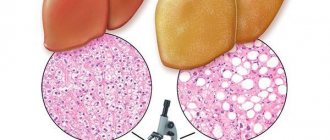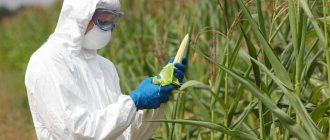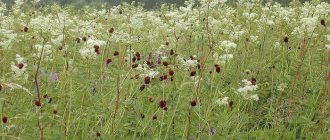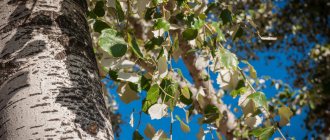Resorcinol
Benzene-1,3-diol[1]Other names
Resorcinol[1] Resorcinol m
-Dihydroxybenzene 1,3-benzenediol 1,3-dihydroxybenzene 3-hydroxyphenol
m
-Benzenediol
- 108-46-3 Y
- Interactive image
- CHEBI: 27810 N
- ChEMBL24147 Y
- 4878Y
- D00133 Y
- 5054
- YUL4LO94HK Y
- DTXSID2021238
- InChI = 1S / C6H6O2 / c7-5-2-1-3-6 (8) 4-5 / h1-4.7-8H Y
Key: GHMLBKRAJCXXBS-UHFFFAOYSA-N Y
- InChI = 1 / C6H6O2 / c7-5-2-1-3-6 (8) 4-5 / h1-4.7-8H
Key: GHMLBKRAJCXXBS-UHFFFAOYAB
- c1cc(cc(c1)O)O
a)9.15 [3] Magnetic susceptibility (χ) -67.26·10−6 cm3/mol Dipole moment 2.07±0.02 [4] Pharmacology Air Traffic Control Code D10AX02 (KTO) S01AX06 (KTO) Hazards EU Classification (DSD) (obsolete)Harmful (Xn
) Dangerous for the environment (
N
) flash point 127 ° C; 261°F; 400 K [2] Explosion limits 1.4%-? [2] NIOSH
(US Health Exposure Limits): PEL (Permissible) none[2] REL (Recommended) TWA 10 ppm (45 mg/m3) ST 20 ppm (90 mg/m3)[2] IDLH (Immediately Hazardous) )ND[2] Unless otherwise stated, data for materials are given in their standard state (at 25 °C [77 °F], 100 kPa).N check (what YN ?)Infobox links
Resorcinol
(or
resorcinol
) is an organic compound with the formula C6H4(OH)2.
It is one of the three isomeric benzene diols, the 1,3-isomer (or meta
-isomer). It is a white, water-soluble solid.[5]
Production
Resorcinol is produced in several steps from benzene, starting with dialkylation with propylene to give 1,3-diisopropylbenzene. Oxidation and Reorganization of the hock from this disubstituted arene produces acetone and resorcinol.[5]
Resorcinol is an expensive chemical produced in only a very small number of locations around the world (only three commercial plants are known to be operating today: in the USA, West Germany and Japan), and as such it is a determining factor in the cost of phenol resorcinol formaldehyde PRF adhesives.[6]
There are many additional ways to take resorcinol. It can be produced by any of a large quantity of resin (eg, galbanum, asafoetida, etc.) melted with potassium hydroxide, or distilled from Brazilwood extract. It can be prepared synthetically by melting 3-iodophenol, phenol-3-sulfonic acid, or benzene-1,3-disulfonic acid with potassium carbonate; the action of nitrous acid on 3-aminophenol or 1,3-diaminobenzene.[7] Lots of ortho
- and
para
-aroma series compounds (eg, bromophenols, benzene-
para
-disulfonic acid) also give resorcinol when fused with potassium hydroxide.
RESORCIN: instructions for use, price, composition and analogues
Dermatologist of the highest category Inna Vladimirovna
34049
Update date: April 2019
Resorcinol is an antiseptic that has a powerful antimicrobial effect and has antiseborrheic and dermatoprotective properties. Most often used for disinfection in the treatment of skin diseases.
Side effects
Just like phenol, resorcinol formaldehyde, if used incorrectly, can cause a number of undesirable reactions from the body. The most common effects that occur are:
- nausea;
- vomit;
- severe headaches;
- dizziness;
- increased sweating;
- cyanosis;
- increased heart rate;
- spasms and cramps;
- loss of consciousness.
In rare cases, after taking Resorcinol formaldehyde, allergic reactions such as dermatitis, itching and redness of the skin, urticaria, bronchospasm and angioedema may develop.
Drug interactions
Before you start taking Resorcinol, you should carefully read the instructions for drug interactions with other drugs.
Formalin resorcinol is absolutely incompatible with the following drugs:
- Antipyrine.
- Camphor.
- Salicylic acid.
- Menthol.
- Phenyl salicylate phenol.
If we are talking about an alcohol solution or a powder form of the product, then it is incompatible with substances that have an alkaline reaction. In the form of an ointment, the product cannot be used together with yellow mercuric oxide, since the latter completely loses its effectiveness.
Analogs and cost of Resorcinol
There are several drugs that have a similar effect to Resorcinol. The most popular of them is Resorcinol. This remedy has the same active ingredient and has a similar effect.
The average price of Resorcinol in powder form is 200 rubles per package.
Reviews
Reviews about Resorcinol are mostly positive. Here are some of them.
Olga, Saratov
“I used Resorcinol in the treatment of acne vulgaris. The doctor prescribed me a 15% ointment, which I applied to the affected area twice a day. As a result, the acne began to dry out slowly and then disappeared completely. A year passed and I completely forgot about my acne problems.”
Valery, Nizhny Novgorod
“A 14-year-old child was prescribed formalin resorcinol for eczema. They applied it several times a day - it didn’t help. In the end, the doctor suggested choosing a different medicine.”
Igor, St. Petersburg
“Used Resorcinol in powder form as powders. As a result, irritation developed and the treatment had to be canceled. I do not recommend this drug to anyone.”
Maxim, St. Petersburg
“Great product! The doctor prescribed me resorcinol alcohol to cauterize papillomas. Since there were only two, he said that a local remedy would be most effective. And I turned out to be right - I eventually got rid of papillomas once and for all!”
Reactions
This reduces Fehling's Solution and ammonia solutions of silver. Does not form a precipitate with lead acetate solution, like isomeric pyrocatechol. Iron (III) chloride colors its aqueous solution dark purple, and bromine water precipitates tribromoresorcinol. These properties allow it to be used as a dye. chromatography experiments.
Sodium amalgam reduces it to dihydroresorcinol, which when heated to 150-160 °C with concentrated barium hydroxide solution gives γ-acetylbutyric acid
When combined with potassium hydroxide, resorcinol gives phloroglucinol, pyrocatechol and Diresorcin. This condenses with acids or acid chlorides, in the presence of dehydrating agents, onto oxyketones, for example with zinc chloride and glacial acetic acid at 145 °C to form resacetophenone (HO)2C6H3~CO.CH3.[8] With dibasic acid anhydrides, it gives fluoresceins. When heated with calcium chloride-ammonia to 200 °C it gives meta-dioxydiphenylamine.[9]
With the participation of sodium nitrate, it forms a water-soluble blue dye that turns red when exposed to acids and is used as an indicator called lakmoid.[10] Easily condenses with aldehydes, yielding to formaldehyde, when adding catalytic hydrochloric acid, methylene direxorcinol [(HO) C6HAC3(O)]2• CH2. Reaction with chloral hydrate in the presence of potassium bisulfate gives tetra-oxydiphenylmethanecarboxylic acid lactone.[11] In alcohol solution, it condenses with sodium acetoacetate to form 4-methylumbelliferone.[12]
In addition to electrophilic aromatic addition, resorcinol (and other polyols) undergo nucleophilic substitution via the Enone tautomer.
Nitration of concentrated nitric acid in the presence of cold with concentrated sulfuric acid gives trinitro-resorcinol (styphic acid), an explosive.
Applications
Resorcinol is primarily used in the production of resins. When mixed with phenol, it condenses with formaldehyde to form an adhesive.[5]
Medical
It is present in topical over-the-counter acne treatments at concentrations of 2% or less, as well as in prescription medications at higher concentrations.[13] Monoacetylresorcinol, C6HAC4(OH) (O-COCH3), used under the name eurezol
[14] It is used in hidradenitis suppurativa with limited evidence showing that it may help resolve the lesions.[15] Resorcinol is one of the active ingredients in products such as Resinol, Vagisil, and Clearasil.
4-hexylresorcinol is an anesthetic found in throat lozenges.
Chemical
Resorcinol is also used as a chemical intermediate for the synthesis of pharmaceuticals and other organic compounds. It is used in the production of diazo dyes and plasticizers, and as an absorbent in resins.
Resorcinol is an analytical reagent for the qualitative determination of ketoses (Selivanov Test).
Resorcinol is the starting material for the resorcinarene molecule and the initiating explosive is lead styphnate.[16]
Resorcinol reacts with formaldehyde to form a thermosetting resin that can form the basis of an airgel.
Resorcinol
Resorcinol is a pharmacological drug from the group of antiseptic drugs that has a pronounced antifungal effect. International name: Resorcinol. It also has antiseborrheic and dermatoprotective effects on the human body.
Resorcinol is used primarily for disinfection in the treatment of dermatological diseases.
With its properties and pungent odor, Resorcinol is similar to phenol. This drug should not be used on the mucous membranes of the body.
Contraindications
Resorcinol has some contraindications for its use. These include:
- individual intolerance or hypersensitivity to any of the components that make up this drug;
- thermal and chemical burns;
- deep skin lesions;
- pregnancy period;
- breastfeeding period;
- children and adolescents up to eighteen years of age.
Caution is necessary when prescribing this drug to patients who have sensitive skin or are in adolescence with increased hormonal development.
Storage conditions and periods
This drug must be stored in a place protected from light, moisture and children. The shelf life of Resorcinol powder or ointment is three years from the date of release of the medicine indicated on the package. The optimal temperature for storing ointment is from ten to eighteen degrees Celsius, for powder – up to thirty degrees Celsius.
After the expiration date, the drug cannot be used in any form.
Related compounds
Resazurin, C12HAS7No4, obtained by the action of nitrous acid on resorcinol,[17] forms small dark red crystals with a greenish metallic tint. When dissolved in concentrated sulfuric acid and heated to 210 ° C, the solution, when poured into water, gives a precipitate of resorufin, C.12H7Net3, oxyphenoxazone, which is insoluble in water, but readily dissolves in hot concentrated hydrochloric acid and in solutions of caustic alkalis. Alkaline solutions have a pink-red color and cinnabar-red fluorescence. Tetrabromoresorufin is used as a dye called fluorescent resorcinol blue.
Thioresorcinol is obtained by the action of zinc and hydrochloric acid on benzene metadisulfonic acid chloride. It melts at 27 °C and boils at 243 °C. Resorcinol disulfonic acid, (HO)2C6HAS2(HSO3)2, is a deliquescent mass produced by the action of sulfuric acid on resorcinol.[18] It dissolves well in water and ethanol.
Resorcinol is also a common scaffolding that is in the class of anticancer agents, several of which (luminespib, ganetespib, KW-2478 and onalespib) were in clinical trials as of 2014.[19][20] Part of the resorcinol structure binds to and inhibits the N-terminal domain of heat shock protein 90, which is a drug target for anticancer treatment.[19]
Contraindications
Resorcinol is a fairly safe remedy that gently kills fungal infections. Despite this, the manufacturer lists the following as complete contraindications:
- deep damage to the skin;
- burns of various nature;
- hypersensitivity and individual intolerance to the components of the drug;
- children under 18 years of age;
- renal and liver failure;
- sensitive skin;
- time of hormonal therapy.
History, etymology and nomenclature
Austrian chemist Heinrich Glasivec (1825–1875) is famous for his chemical analysis of resorcinol and his involvement in the first preparation of resorcinol, along with Ludwig Barth, which was published in 1864.[21]:10[22]
Benzene-1,3-diol is the name recommended by the International Union of Pure and Applied Chemistry (IUPAC) in its 1993 Recommendation on Nomenclature of Organic Chemistry.
.[23]
Resorcinol is so named because it is formed from an ammoniated resin and also because of its association with the chemical. orcin.[24]
Reviews
Reviews mainly concern the use of Resorcinol for acne vulgaris: 10-15% ointment, drying the stratum corneum, acts as an exfoliant and helps get rid of acne. It is noted that for acne, a good result is given by talkers - powder of the main substance, chloramphenicol, boric and salicylic acid, and a composition containing only resorcinol is ineffective, in addition, it can cause irritation and dryness of the skin. Resorcinol alcohol is used to cauterize individual rashes.
This substance, in combination with sulfur and salicylic acid, helps to cope with open and closed comedones.
References
- ^ a b
"Front matter."
Organic Chemistry Nomenclature: IUPAC Recommendations and Preferred Names 2013 (Blue Book)
. Cambridge: Royal Society of Chemistry. 2014. p. 691. Doi:10.1039 / 9781849733069-FP001. ISBN 978-0-85404-182-4. - ^ a b c d f g h Chemical
Hazards. "#0543". National Institute of Occupational Safety and Health (NIOSH). - Gawron, O.; Duggan, M.; Greleci, K. (1952). "Manometric determination of dissociation constants of phenols." Analytical chemistry
.
24
(6):969–970. doi:10.1021/ac60066a013. - Lander, John J.; Swirbely, John J. Lander, W. J. (1945). "Dipole moments of catechol, resorcinol and hydroquinone". Journal of the American Chemical Society
.
67
(2):322–324. Doi:10.1021/ja01218a051. - ^ a b c
K. V. Schmiedel, D. Dekker (2012).
"Resorcinol". Ullman Encyclopedia of Industrial Chemistry
. Weinheim: Wiley-VCH. Doi:10.1002 / 14356007.a23_111.pub2.CS1 maint: uses the authors parameter (link to site) - Wood Adhesives, Pizzi and Mittal, 2010
- Meyer, J (1897). “Notiz über die Umwandlung von Aminen in Phenole.” Berichte der Deutschen Chemischen Gesellschaft
.
30
(3):2568–2569. Doi:10.1002/cber.18970300334. - Nencki, M.; Sieber, N. (1881). “Über die Verbindungen der ein- und zweibasischen Fettsäuren mit Phenolen.” Journal für Praktische Chemie
.
23
(1): 147–156. Doi:10.1002/prac.18810230111. - A. Seewitz, Bull. Soc. Chins., 1890, 3, p. 811
- Traub, M. S.; Hawk, C. (1884). "Ueber ein Lakmoid". Berichte der Chemischen Gesellschaft
.
17
(2):2615–2617. Doi:10.1002/cber.188401702192. - J. T. Hewitt and F. G. Pope, Jour. S/thorn. Soc., 1897, 75, p. 1084
- Michael, Arthur (1888). "Ueber das Verhalten von Natriummalonäther gegen Resorcinol." Journal für Praktische Chemie
.
37
(1):469–471. Doi:10.1002/prac.18880370144. - Boer, J; Jamek, G. B. (2010). "Resorcinol peels as a possible self-treatment of painful nodules in hidradenitis suppurativa." Clinical and Experimental Dermatology
.
35
(1): 36–40. Doi:10.1111/j.1365-2230.2009.03377.x. PMID 19549239. S2CID 1794323. - Euresol, PubChem
- Vipperman, J; Bragg, D. A.; Litzner, B. (November 1, 2021). "Hidradenitis Suppurativa: Rapid Evidence Review". American family physician
.
100
(9):562–569. PMID 31674740. - "Military Explosives," Department of the Army Technical Manual, TM-9-1300-214 (Washington, DC: Department of the Army, September 1984), pp. 7-12.
- Veselsky, P (1871). "Neue Derivate des Resorcins" [New resorcinol derivatives]. Berichte der Deutschen Chemischen Gesellschaft
.
4
: 32–33. Doi:10.1002/cber.18710040114. - Piccard, J.; Humbert, A. (1876). "Ueber eine Resorcindisulfosäure" [On the disulfonic acid of resorcinol]. Berichte der Deutschen Chemischen Gesellschaft
.
9
(2):1479–1483. Doi:10.1002/cber.187600902133. - ^ a b
Sidera, K.;
Patsavudi, E. (January 2014). "HSP90 inhibitors: current developments and potential in cancer therapy." Latest Patents for Anti-Cancer Drug Discovery
.
9
(1): 1–20. Doi:10.2174/15748928113089990031. PMID 23312026. - Biamonte, M. A.; Van de Water, R.; Arndt, J. W.; Scannevin, R.H.; Perret, D.; Lee, W.-C. (January 2010). "Heat shock protein 90: inhibitors in clinical trials". Journal of Medicinal Chemistry
.
53
(1): 3–17. Doi:10.1021/jm9004708. PMID 20055425. - Raj B. Durairaj. Resorcinol: chemistry, technology and application.
Springer Science & Business Media, 2005 ISBN 9783540280903 - McConnell, Virginia F. (1953). “Hlasivec and Bart are pioneers in the structural aspects of plant foods.” Journal of Chemical Education
.
30
(8): 380. Bibcode:1953JChEd..30..380M. Doi:10.1021/ed030p380. - Panico, R.; & Powell, W. H. (eds.) (1994). 1992 IUPAC Manual of Nomenclature for Organic Compounds
. Oxford: Blackwell Science. ISBN 978-0-632-03488-8 .CS1 maint: multiple names: list of authors (link to website) CS1 maint: additional text: list of authors (link to website) - H. Hlasivec and L. Barth (1864) “Ueber einen neuen, dem Orcin homologen Körper” (On a new substance homologous to Orcin), Annalen der Chemie
,
130
(3): 354-359.
Resorcinol is named on page 358: "Wir nennen den neuen Körper, da wir gefunden haben, dass er auch aus dem Ammoniakgummiharz erhalten werden kann,
Resorcinol
, um an seine Entstehung aus Harzen und seine Beziehung zum Orcin zu erinnern."
(We call the new substance because we discovered that it can be obtained from ammoniated gum
resorcinol
, to recall its creation from the resin and its relationship with orcinol [i.e. orcinol].)
external links
- International Chemical Safety Card 1033
- NIOSH Pocket Guide to Chemical Hazards
- IARC monograph: “Resorcinol”
- Blue Book
online version )
This article incorporates text from a publication now in the public domain: Chisholm, Hugh, ed. (1911). "Resorcinol". Encyclopedia Britannica
.
23
(11th ed.). Cambridge University Press. pp. 183–184.
| Authoritative control |
|
Indications for use
Resorcinol is an extremely toxic substance that is used
- seborrheic dermatitis and neurodermatitis;
- eczema, skin itching, sycosis;
- fungal infection;
- alopecia;
- acne.
Seborrheic dermatitis
Eczema
Fungal infection of the foot
Acne







